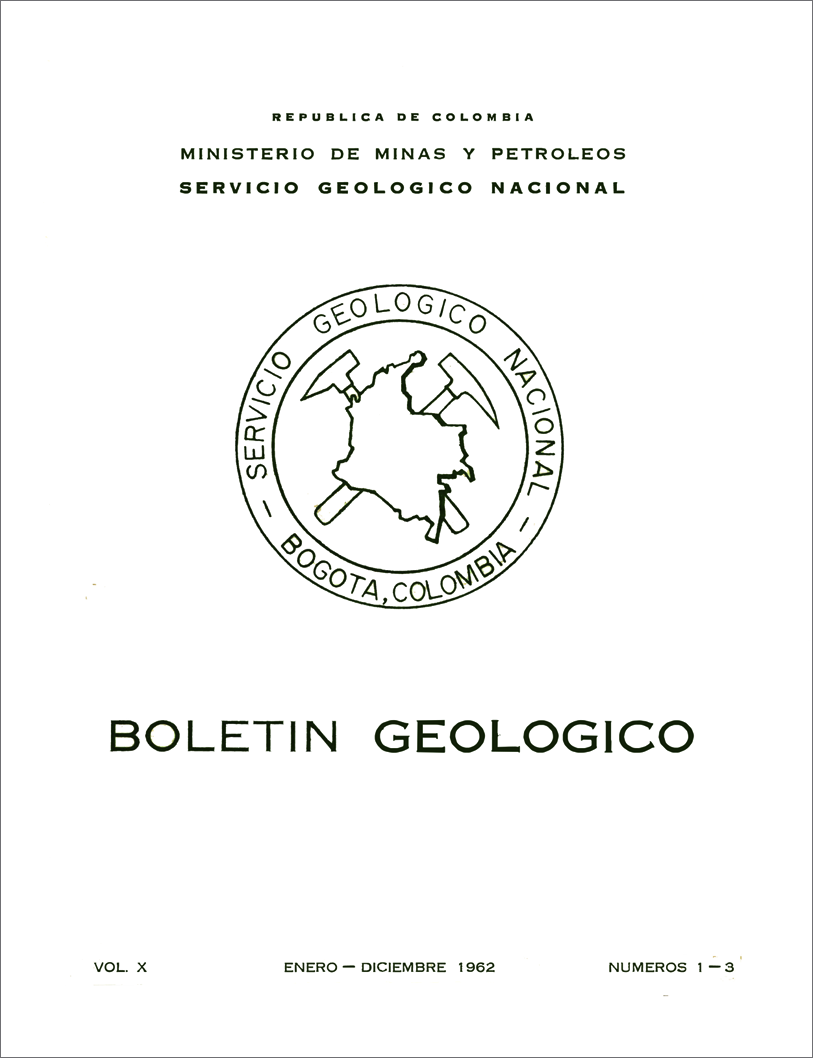Contribution to the knowledge of the central mountain range of Colombia section between Ibagué and Armenia
DOI:
https://doi.org/10.32685/0120-1425/bolgeol10.1-3.1962.302Keywords:
Photogeological studies, mining studies, igneous rocks, metamorphic rocks, tectonic processesLicense
Copyright (c) 1962 Servicio Geológico Colombiano

This work is licensed under a Creative Commons Attribution 4.0 International License.
Downloads
How to Cite
Issue
Section
Published
Abstract
The previous chapters deal with the formations that constitute the Central Cordillera in the section between Ibagué and Armenia. In the metamorphic rock formation preliminarily named "Cajamarca series," the following groups are distinguished: green schists (prasinites), amphibolites, quartz phyllites, quartz schists gneiss, graphitic schists, transition rocks, diabases, and crystalline limestones. Of the prasinites, their origin from diabase tuffs was proved by epi-zonal metamorphism; the amphibolites represent a mesozonar transformation, probably due to the proximity of the intrusive rocks; the other schists are due to the current marine facies, which was sometimes markedly siliceous and sometimes is hidden by the supply of basic tuffs. The mentioned rocks are usually interbedded by diabase spills, which show traces of the subsequent orogenic movement. A morphological phenomenon is that a thick diabase layer now forms the summit of the Quindío Depression.
In the chapter on igneous rocks, minor variations in the type of intrusives were discussed. Then the inclusions of schistose rocks that, in part, were transformed into true hornfels were discussed.
In the chapter on stratigraphy, the probability of the Jura-Cretaceous age of the Cajamarca series was exposed, as well as the correlation with rocks of the same age in the Western Cordillera and on the Porphyritic formation distinguished by E. GROSSE in Antioquia.
In the chapter on tectonics and metamorphism, the close relationship between the degree of metamorphism, the resistance of the strata against deformation, and the structural constitution was demonstrated. The latter implies that the lower levels of the series outcrop on the western slope, while the upper levels show up on the eastern slope.
Finally, mention is made of some economic aspects that are reduced to slight mineralization and the use of rocks for carved stones, ballast, and lime production.









